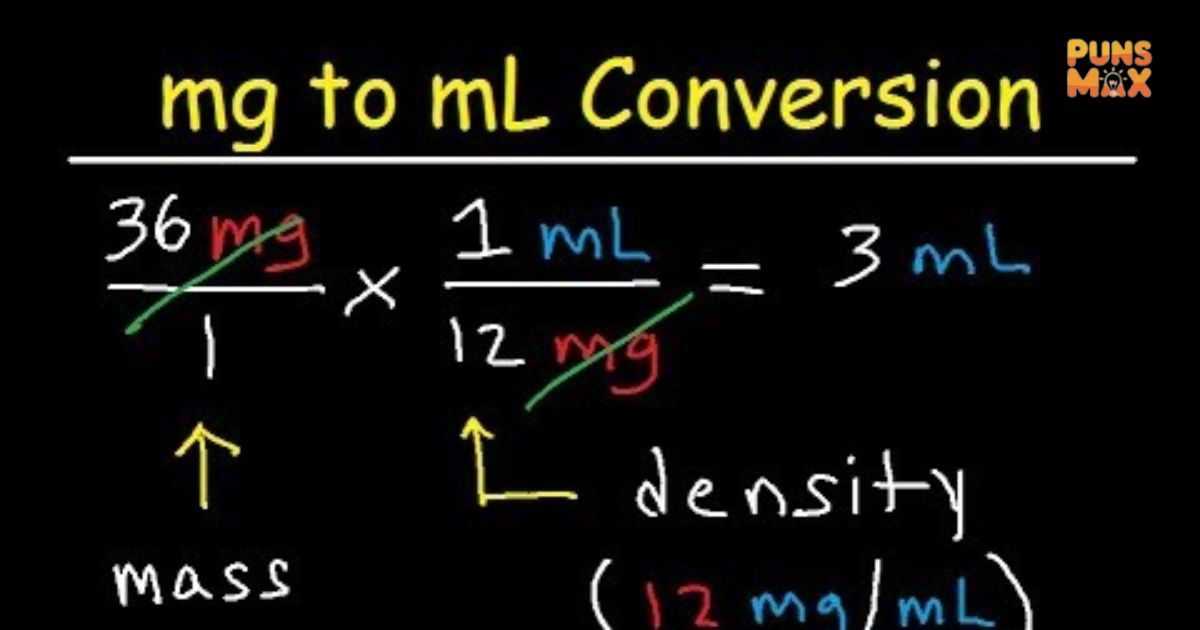Have you ever struggled with mg to ml conversion and felt unsure about getting it right. Whether it’s measuring medicine with a mg to ml syringe, using a mg to ml converter, or simply understanding what these numbers really mean, you’re in the right place. Converting mg to ml might look confusing at first because milligrams measure weight while milliliters measure volume. But don’t worry, this article will guide you step by step.
With easy formulas, practical examples, and handy tips, you’ll learn how to make accurate conversions without stress. So, if you want a clear, reliable answer to your mgml questions, keep reading and you’ll master it in no time.
mg to ml Conversion Made Easy
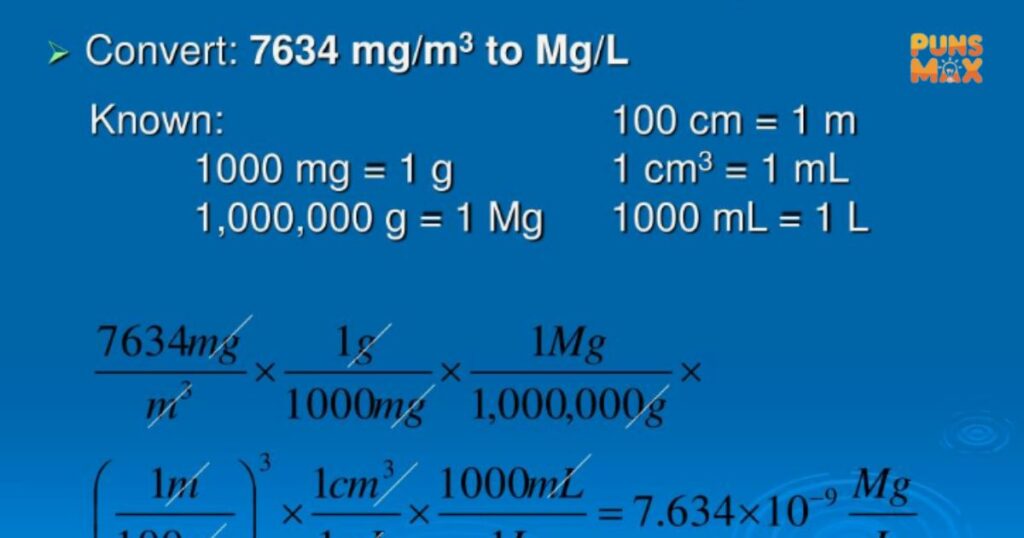
- Converting mg to ml quickly ensures safe dosing accuracy in everyday medication practices.
- Simple mg-to-ml conversions eliminate confusion and bring confidence when measuring liquid medication.
- Knowing the mg-to-ml conversion process keeps healthcare and home remedies precise daily.
- Easy mg conversions into ml protect from overdosing, ensuring safe and effective treatments.
- Simplified mg-ml conversions offer everyday confidence when preparing syrups or liquid medications.
- Converting milligrams to milliliters makes supplement measuring simple for health-conscious individuals daily.
- Mg-ml conversions provide clarity for patients managing personalized dosage charts with consistency.
- Accurate mg-ml conversions allow parents to confidently measure children’s liquid medication doses.
- Easy-to-follow conversion steps save lives by avoiding accidental miscalculations in dosages.
- Learning mg-ml conversions is essential for pharmacists ensuring safe and correct prescriptions.
- Clear conversion methods prevent mistakes in milligrams-to-milliliters during healthcare instructions.
- Mastering mg-ml conversion techniques guarantees proper nutrition when measuring powdered supplements.
- Quick mg-to-ml conversions enhance efficiency in healthcare and home medication management.
- Understanding mg-ml conversion ensures better outcomes and effective patient dosage management.
- Accurate mg-ml conversions encourage confidence in elderly individuals taking daily medications.
- Easy conversion knowledge empowers caregivers managing doses safely for family members.
- Mg-ml conversion skills simplify life for nursing students and practicing healthcare professionals.
- Clear mg-ml conversions minimize anxiety while preparing precise medical or dietary solutions.
- Correct mg-to-ml understanding promotes accurate liquid measurements across scientific research settings.
- Streamlined mg-ml conversion charts bring clarity for everyday people using prescribed treatments.
Read More: 130+Hello Kitty Christmas – Unique Ideas to Make Holidays Special
How to Convert mg to ml Fast
- Divide mg by substance density in mg/ml for quick, accurate conversion results.
- Fast conversions from mg to ml rely entirely on knowing density values correctly.
- To convert quickly, apply mg ÷ density formula, then obtain corresponding ml.
- Simple formulas reduce calculation stress when converting milligrams to milliliters accurately.
- Accurate conversions depend heavily on density: water differs from medicinal liquids.
- Knowing the mg-ml formula saves time during urgent healthcare or scientific procedures.
- Fast conversion requires calculator assistance for precise values without manual errors.
- Quick mg-ml calculations empower healthcare providers managing multiple patients simultaneously.
- Simplified conversions mean patients confidently follow dosage instructions without unnecessary worry.
- Understanding density ensures liquid medications are not mistakenly overdosed or underdosed.
- Convert mg into ml using clear formulas for safe and consistent results.
- Knowing exact conversion formulas prevents serious dosage mistakes during stressful emergencies.
- Quick mg-ml conversion steps improve confidence when preparing syrups or liquid supplements.
- Practical formulas enhance accuracy across laboratories and everyday medical practices worldwide.
- Accurate conversions provide peace of mind for parents administering medicine to children.
- Applying formulas quickly avoids time-consuming errors in professional healthcare environments.
- Simplified conversions remove complexity in educational settings for students learning pharmacy.
- Accurate density awareness is key for correct mg-ml conversion every time.
- Reliable conversion methods empower home users preparing DIY health or fitness drinks.
- Quick formula mastery creates efficiency in hospitals requiring fast and precise medication.
Free mg to ml Calculator Online
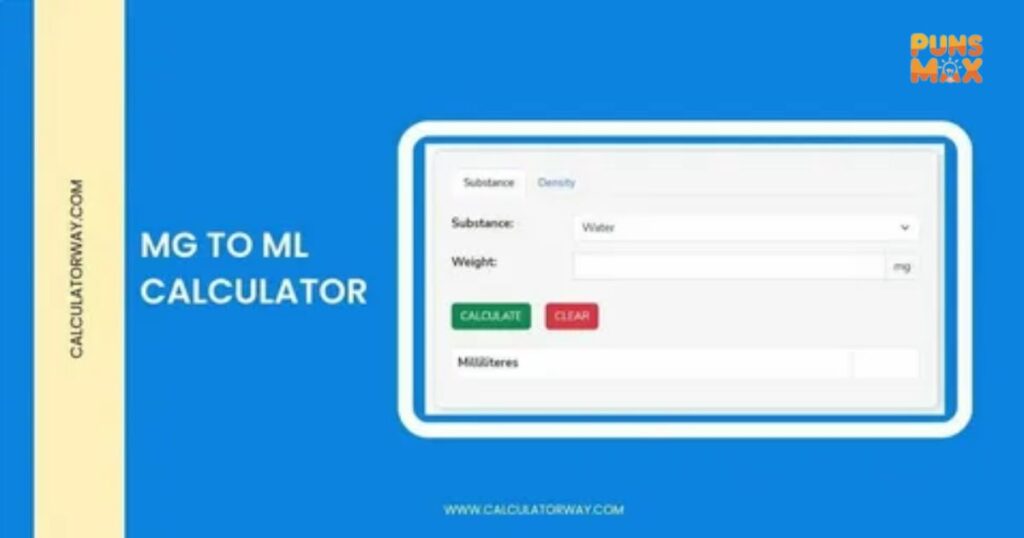
- Online mg-ml calculators simplify conversion tasks, saving time for medical professionals globally.
- Free calculators offer instant conversion without manual math or complex reference charts.
- Digital mg-ml tools reduce stress by automatically computing precise dosage conversions.
- Accessible calculators allow parents to check medicine dosages confidently and efficiently.
- Free online tools empower individuals with no medical background to calculate safely.
- Reliable calculators reduce human error, ensuring treatments remain consistent and effective.
- Free tools provide healthcare workers fast access for dosage management during emergencies.
- Convenient calculators enhance learning for students practicing pharmaceutical dosage calculations.
- Digital calculators are available anytime, anywhere, for consistent conversion accuracy.
- Free calculators support athletes measuring supplements for consistent performance improvement.
- Simple interfaces make online tools easy for anyone to use immediately.
- Free calculators integrate with apps, improving accessibility across various mobile platforms.
- Online conversion tools minimize risks associated with inaccurate manual calculations daily.
- Reliable calculators boost patient confidence by ensuring correct measurements every time.
- Healthcare facilities benefit from free calculators during staff training programs worldwide.
- Online tools reduce stress when converting uncommon medical or nutritional densities.
- Free calculators adapt for both educational and professional healthcare environments consistently.
- Digital tools assist caregivers ensuring elderly patients receive precise daily medication.
- Online calculators encourage safe practices for those self-administering supplements at home.
- Free mg-ml tools improve efficiency, saving healthcare providers valuable daily operational time.
Read More: 160+Cave Springs Cowboy Camp – Authentic Cowboy Experience in Nature
How Many ml in 1 mg
- The answer depends entirely on liquid density: not all substances weigh equally.
- One mg equals variable ml values depending upon solution density and concentration.
- No fixed conversion exists—different substances change mg-ml ratios every time.
- In water, one mg is tiny, requiring calculation using density values.
- One mg may equal more ml when density is relatively low.
- Highly concentrated liquids reduce ml equivalent for every single milligram.
- Conversion depends on formula: mg ÷ density = corresponding milliliters result.
- One mg could represent diverse ml amounts depending on measured substance type.
- Without density, determining ml equivalent of mg is technically impossible accurately.
- Different medicines show different ml values despite equal milligram quantities.
- One mg in ml for alcohol differs significantly from one mg water.
- The exact answer requires density chart reference for particular liquids being converted.
- One mg conversion to ml remains case-specific and must be calculated properly.
- No universal constant exists—each mg conversion depends upon its respective density.
- Conversion accuracy improves with online tools or reliable pharmaceutical reference charts.
- One mg-to-ml varies widely; careful calculation prevents accidental dosing errors.
- Water’s density makes one mg conversion straightforward compared to other substances.
- The exact ml for one mg changes across medications and solutions.
- Precision matters—each mg-ml calculation must consider the density factor before applying.
- Answering one mg equals how many ml requires scientific formula and density.
mg to ml for Medicines & Dosages
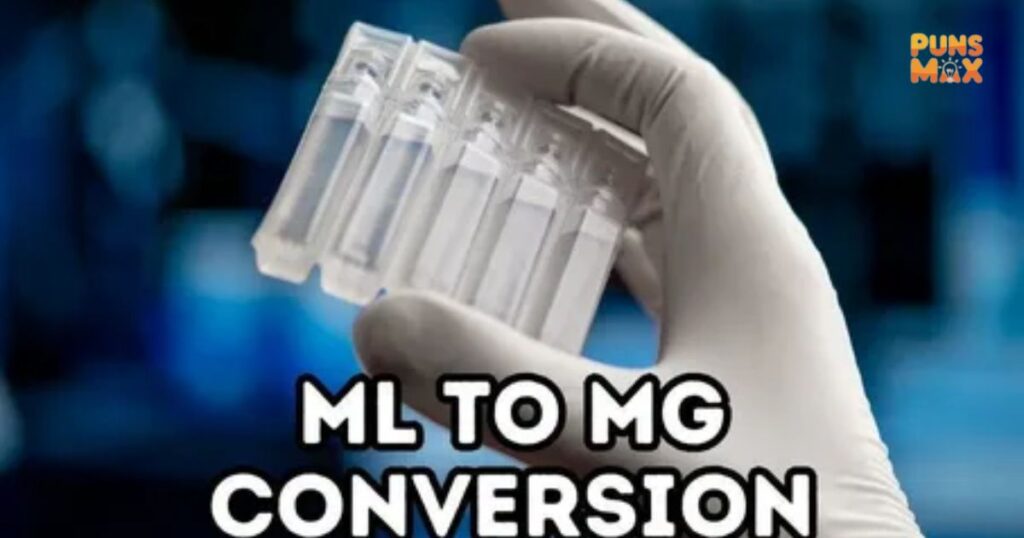
- Accurate mg-ml conversion ensures safe dosages for liquid medicines prescribed by doctors.
- Correct conversion avoids harmful overdosing risks, particularly in pediatric medical treatments.
- Pharmacists rely heavily on precise mg-ml conversions for patient safety assurance.
- Reliable conversions help patients take medicine confidently without misunderstanding instructions.
- Dosage errors decrease dramatically with clear knowledge of mg-to-ml conversions.
- Parents benefit by accurately measuring syrup medicines for their young children.
- Conversions protect elderly patients requiring daily dosages of liquid-based prescriptions.
- Nurses use mg-ml calculations daily to administer injections and syrups correctly.
- Safe conversion prevents life-threatening mistakes during emergency medical situations.
- Doctors prescribe liquid medicines with dosage charts depending on accurate mg-ml values.
- Conversions allow pharmacists to prepare customized liquid dosages for patient needs.
- Children’s liquid antibiotics require exact conversions for safety and effectiveness daily.
- Understanding mg-ml conversions eliminates patient confusion over prescription medicine labels.
- Medicine safety improves when patients know how to double-check dosage volumes.
- Clear mg-ml conversions create confidence for home care providers treating relatives.
- Reliable dosage conversions are essential when transitioning from tablets to liquid medicines.
- Mg-ml calculations reduce anxiety for patients managing chronic illnesses at home.
- Injections require accurate conversion to avoid complications from incorrect medicine volumes.
- Correct mg-ml knowledge empowers caregivers delivering medicine under doctor guidance safely.
- Understanding medicine conversions saves lives in both hospitals and home environments.
Read More: 110+Big Brother 21 Full Story, Drama, and Cast Revealed
mg to ml Chart with Examples
- Conversion charts display mg-ml values clearly for patients needing immediate reference.
- Charts simplify learning by providing step-by-step examples of milligram conversions.
- Visual conversion tables help patients understand dosages more effectively every time.
- Charts improve accuracy by providing pre-calculated reference values for quick use.
- Illustrated examples reduce errors by showing practical mg-to-ml conversion cases.
- Conversion charts are valuable educational resources for pharmacy and nursing students.
- Visual guides increase confidence in patients self-administering prescribed liquid medicines.
- Charts provide clarity for caregivers managing complex medication schedules daily.
- Reference charts allow patients to confirm doctor instructions accurately at home.
- Conversion tables reduce stress in emergencies when fast dosing decisions matter.
- Charts show practical everyday examples like syrup or supplement measurements clearly.
- Reference sheets support healthcare staff by improving communication during patient care.
- Clear charts eliminate calculation errors for busy healthcare workers under pressure.
- Visual examples simplify complex formulas into easy-to-understand daily references.
- Conversion charts allow better planning for long-term medication management routines.
- Illustrated guides give patients independence when measuring their own prescriptions.
- Charts improve healthcare training programs by offering practical conversion case studies.
- Tables bring consistency across different hospitals by standardizing mg-to-ml conversions.
- Charts improve efficiency by minimizing calculation time during urgent medical procedures.
- Simple illustrated examples build patient trust in healthcare systems consistently.
mg vs ml Key Differences
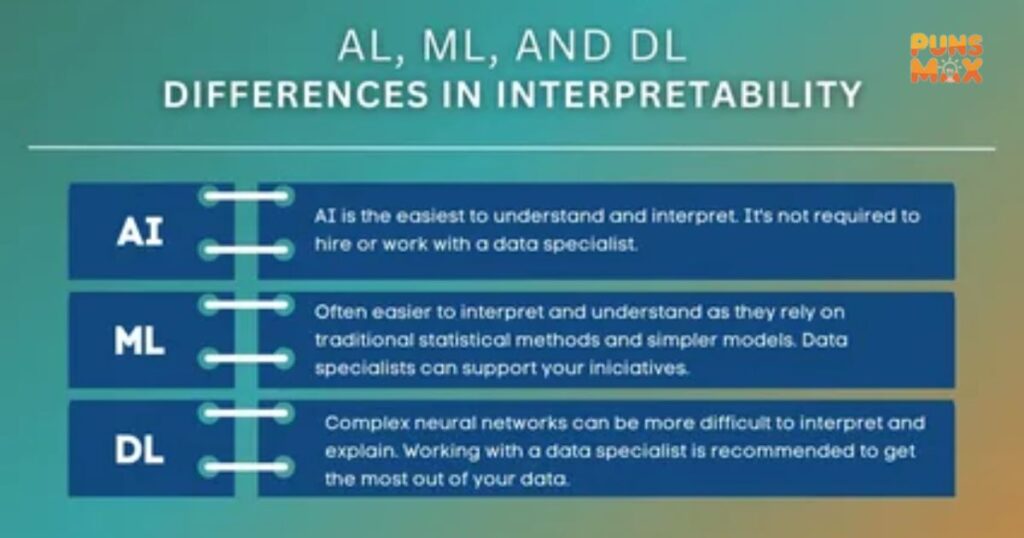
- Mg measures weight, ml measures volume—fundamental distinction between two units.
- Milligrams quantify mass, whereas milliliters measure liquid space capacity directly.
- Weight-to-volume difference means conversion always requires knowing material density.
- Mg represents solid particle weight, ml represents liquid container volume size.
- Milligrams are universal weight units, while milliliters focus on liquid measurements.
- One mg never equals one ml without considering density calculation carefully.
- Understanding mg vs ml prevents confusion across cooking, science, and medicine.
- Mg measures how heavy, ml measures how much liquid fills.
- Conversion confusion disappears when recognizing the difference between weight and volume units.
- Pharmacies rely on distinguishing mg vs ml for accurate patient treatments.
- Nutrition facts list mg for minerals, ml for beverage servings sizes.
- Healthcare emphasizes knowing the difference—mg tablets differ from ml liquid syrups.
- Science education teaches mg equals mass, ml equals volume understanding.
- Mg to ml difference underpins correct formulation of medicines and supplements worldwide.
- Differentiating mg and ml prevents harmful mistakes during prescription interpretations.
- Mg units apply to solids; ml applies when measuring liquids properly.
- Milligrams require scales, milliliters require measuring cups or syringes accurately.
- Distinction helps patients recognize tablets measured differently from liquid medicines.
- Conversions require bridging the gap between weight (mg) and liquid volume (ml).
- Mg vs ml knowledge forms the foundation of accurate dosing across disciplines.
Easy mg to ml Conversion Tips
- Always check density first—mg cannot convert to ml without that information.
- Use online calculators for faster and more accurate conversion results instantly.
- Keep reference charts handy for everyday conversions in healthcare environments.
- Double-check conversions to avoid dangerous overdosing or underdosing risks daily.
- Always use precise syringes or measuring cups for liquid medicines or supplements.
- Write down conversions to prevent forgetting or misreading values accidentally.
- Use smartphone apps to simplify mg-ml conversions during busy schedules.
- Remember different liquids require different conversion values, never generalize.
- Consult pharmacist when unsure about conversions for prescribed liquid medicines.
- Practice conversions regularly to build confidence handling medical or nutritional dosages.
- Use reliable references instead of estimating conversions for safety assurance.
- Teach children basics of mg-ml conversions for long-term health literacy.
- Rely on medical professionals for complex or unclear conversion calculations always.
- Combine formula and chart to verify conversions for best accuracy.
- Cross-check with multiple tools before administering liquid doses to patients.
- Label converted syrups clearly to avoid mix-ups or dosage errors.
- Keep a personal conversion notebook for frequent supplements or medicines.
- Start with simple conversions like water before handling complicated substances.
- Share conversion tips with caregivers to improve family health safety overall.
- Follow step-by-step guides to master mg-ml conversions efficiently and safely.
Conclusion
At the end of the day, knowing how to convert mg to ml can save you time, effort, and mistakes especially when it comes to medicines or daily use. Whether you’re using a mg to ml syringe, checking a mg to ml converter, or studying a mg to ml conversion chart, accuracy is what matters most.
Remember that mg measures weight while ml measures volume, so always double-check your substance before converting. With the right knowledge, examples, and tools, you’ll never get stuck again. Now, converting mg to ml isn’t complicated, it’s a skill you can master with confidence.

